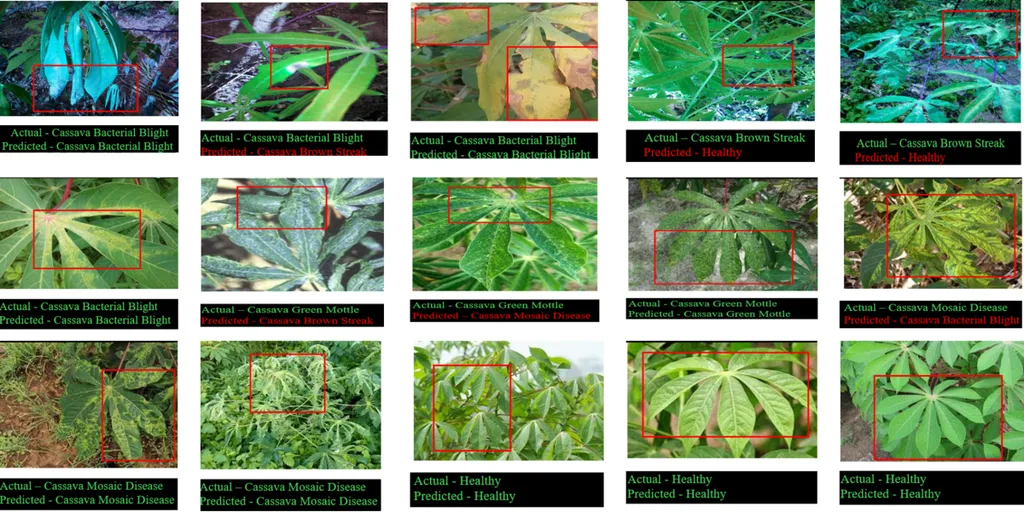In the heart of sub-Saharan Africa, cassava is more than just a crop—it’s a lifeline. Yet, diseases like Cassava Mosaic Disease (CMD) and Cassava Brown Streak Disease (CBSD) threaten this vital staple, leading to substantial yield and economic losses. Traditional methods of disease detection, relying heavily on manual inspection, are not only time-consuming but also unreliable, especially across vast or remote farmlands. Enter precision agriculture, a field that’s been revolutionized by the integration of unmanned aerial vehicles (UAVs) and deep learning, offering scalable and accurate alternatives.
A recent study published in *Smart Agricultural Technology* explores two distinct approaches for cassava disease detection, each with its unique strengths. The first approach leverages a Transformer-based model tailored for UAV-acquired imagery. This model, known as ED-Swin, incorporates multi-scale attention and deformable convolution modules, enabling it to handle complex field conditions such as occlusion, uneven lighting, and irregular lesion morphology. “The ED-Swin model excels in spatial awareness and classification accuracy,” explains lead author Wasiu Akande Ahmed from the Regional Centre for Space Science and Technology Education in Asia and the Pacific (RCSSTEAP), Hangzhou International Innovation Institute, Beihang University, China. “It’s a game-changer for UAV-based disease monitoring.”
The second approach employs a transfer learning method using the Inception v3 convolutional neural network with static leaf datasets. Though computationally simpler, this model achieves competitive accuracy using relatively small datasets, making it ideal for smartphone-based field deployment. “The Inception v3 model offers practical advantages in low-resource environments due to its efficiency and ease of implementation,” Ahmed adds.
The commercial implications of this research are profound. For farmers, these technologies promise early disease detection, reducing yield losses and improving economic outcomes. For agribusinesses, the integration of AI and UAVs opens new avenues for precision agriculture, enhancing crop health surveillance, and supporting sustainable practices. The study underscores the transformative role of artificial intelligence in agriculture, paving the way for a future where technology and farming intersect to create more resilient and productive farming systems.
As we look ahead, the complementary nature of these approaches suggests a robust framework for cassava disease monitoring. The high precision of UAV-Transformer systems combined with the accessibility of mobile CNN tools could redefine disease management strategies, benefiting both small-scale farmers and large agricultural enterprises. This research not only highlights the current capabilities of AI in agriculture but also hints at the potential for future developments, where advanced technologies continue to shape the future of farming.

